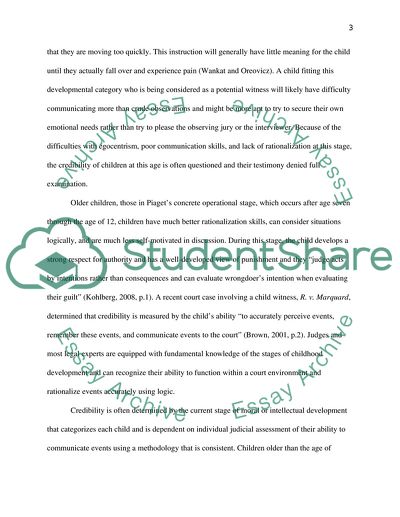Cite this document
(Childrens Testimony Research Paper Example | Topics and Well Written Essays - 1500 words, n.d.)
Childrens Testimony Research Paper Example | Topics and Well Written Essays - 1500 words. Retrieved from https://studentshare.org/law/1735667-childrens-testimony
Childrens Testimony Research Paper Example | Topics and Well Written Essays - 1500 words. Retrieved from https://studentshare.org/law/1735667-childrens-testimony
(Childrens Testimony Research Paper Example | Topics and Well Written Essays - 1500 Words)
Childrens Testimony Research Paper Example | Topics and Well Written Essays - 1500 Words. https://studentshare.org/law/1735667-childrens-testimony.
Childrens Testimony Research Paper Example | Topics and Well Written Essays - 1500 Words. https://studentshare.org/law/1735667-childrens-testimony.
“Childrens Testimony Research Paper Example | Topics and Well Written Essays - 1500 Words”, n.d. https://studentshare.org/law/1735667-childrens-testimony.


